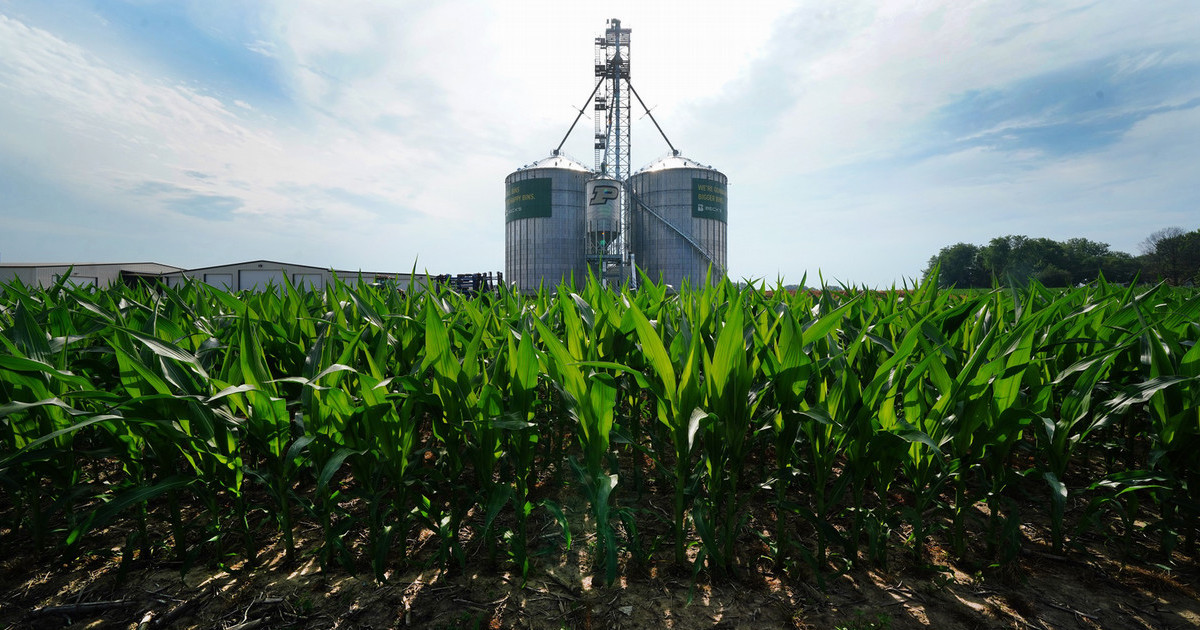This Must Be the Place

~by Michael Wilcox
Assistant Director and Program Leader for Community Development / Purdue Extension
Associate Director / North Central Regional Center for Rural Development (NCRCRD)
Every time new Census Data arrives, I receive a call from Perry County.
On the other end of the line is Erin Emerson, Executive Director of the Perry County Development Corporation. Then, the Talking Heads song flows into my brain, “Home is where I want to be, pick me up and turn me round.”
Erin is passionate about Perry County, no doubt about it. Take one look at their Facebook page or Pick Perry website. When the call comes, Erin wants to know what the latest news is regarding population dynamics.
When I first met Erin in 2014, the passion was there, but the infrastructure to put Perry County on the map was not. In fact, you would have been hard-pressed to find information about Perry County. However, after participation in the Hometown Collaboration Initiative, a collaboration between the Indiana Office of Community and Rural Affairs, the Purdue Center for Regional Development (PCRD), Purdue Extension, and Ball State University, Perry County established an award-winning website and community branding campaign. Purdue Extension and PCRD continued our collaboration (see impact report below) with Perry County in many different ways. Now, through Perry County’s hard work and determination, they are more than on the map. They have a strong sense of community pride, and people are discovering it as a place to call home.
Not only that, residents can point to an impressive and tangible way that the changes in Perry County have manifested themselves – their county health ranking has skyrocketed from #71 (out of 92) in 2011 to #42 in 2021. This represents a jump of 29 places, the fourth largest in Indiana during that period [with Parke (45), Pike (43), Martin (36), and Spencer (25) the others in the top 5 and Union (-47), Randolph (-34), Gibson (-32) and Adams, and Crawford and Wells (tied at -26) in the bottom 5].
Like all leaders of local economic development organizations, Erin wants to see evidence that what they are doing is working. Unfortunately, key metrics, like health rankings, are often overlooked. Instead, most people turn to population and jobs.
In terms of jobs, Perry County’s employment base has grown from 7,942 jobs in 2010 to 8,276 jobs in 2020, a 4% increase according to EMSI. Much of that gain has been in manufacturing, retail trade, and transportation and warehousing. This is the good news.
However, the losses have hit healthcare and social assistance and government hard. And while some may applaud the government shrinking, one must keep in mind that virtually all of the public service job loss was in hospitals (local government) (NAICS 903622). In the healthcare and social assistance sector, nearly all of the loss came from nursing care facilities (skilled nursing facilities, NAICS 623110) and services for the elderly and persons with disabilities (NAICS 624120). Frustratingly for Perry County, two of the three sectors were expected to grow (according to a shift-share analysis that examines national, industry, and local effects). In all three, the local effects outweighed the others. So, can anything be done?
The answer is… yes!
Erin understands that for employers to stay, for jobs to grow, and for the population to choose to locate/remain, there needs to be a strong foundation of education, housing, business, social cohesion, infrastructure and, if you are lucky, a robust food system. Often overlooked in this mix is childcare. Perry County is a mix of moderate and low capacity for childcare. Tell City, where Erin lives and where much of Perry County’s retail and industry is located, is a childcare desert. Recognizing this, Erin helped lead the creation of the Perry Preschool and Childcare (PPC) and has been advocating for more to be done so everyone in Perry County has access to childcare. Has it worked?
According to EMSI, the child daycare services (NAICS 624410) sector has grown in spite of a downward trend in the industry and an expected slight uptick based on national trends. While the shift share analysis points towards an expected loss of 15 jobs between 2010-2020, Perry actually gained 26 jobs due to an overwhelming “competitive effect” which takes into account the local/regional effects that are otherwise unaccounted for through industry and national trends.
Is it enough? Absolutely not.
The childcare sector has been adversely affected by the pandemic to the extreme. And, making matters worse, EMSI estimates that workers in this field earn approximately $17,487 per year adjusted for Perry County’s cost of living. This places constraints on worker availability and is detrimental to developing the potential of Perry County’s future.
“Home, is where I want to be, but I guess I’m already there.”
Erin is just as passionate about the population as a whole. And, when she calls, we always look first at whether the population of Perry County has grown. The trend from 2010 to 2016 was definitely downward. Since 2016, it has been creeping upward. Between 2010 and 2020, Perry County lost around 180 people in total. Why? Due to there being more deaths than births and more people moving out of the county to other parts of the United States than moving in. The only source of growth has been international migration. But, these trends need to be looked at relative to other counties like Perry.
Between 2010 – 2020, only three rural counties experienced an increase in population (LaGrange, Switzerland and Gibson). Perry decreased by less than one percent, the second smallest decrease amongst rural counties (Crawford being the smallest). Also, every rural county experienced losses due to domestic migration and Perry County was the third lowest. Do these observations satisfy Erin? No. But, we all need to recognize that the situation could be much worse and honor that the collective work of many is contributing to the outcomes.
For your community, take a look at the data. My colleagues, Roberto Gallardo and Benjamin St. Germain wrote a recent article exploring this data and offer very interesting insights and cool data visualizations. Also, explore two tools that have been updated with the latest data on diversity and migration. What story can you tell?
As for Erin, she is in Perry County today doing what she always does, finding ways to make Perry County even better. Like many people that come from rural areas, she has had opportunities to live elsewhere. Erin has made the conscious choice to stay and make a difference. And, as the song says, spread her wings.
“I come home, she lifted up her wings, guess that this must be the place.”


